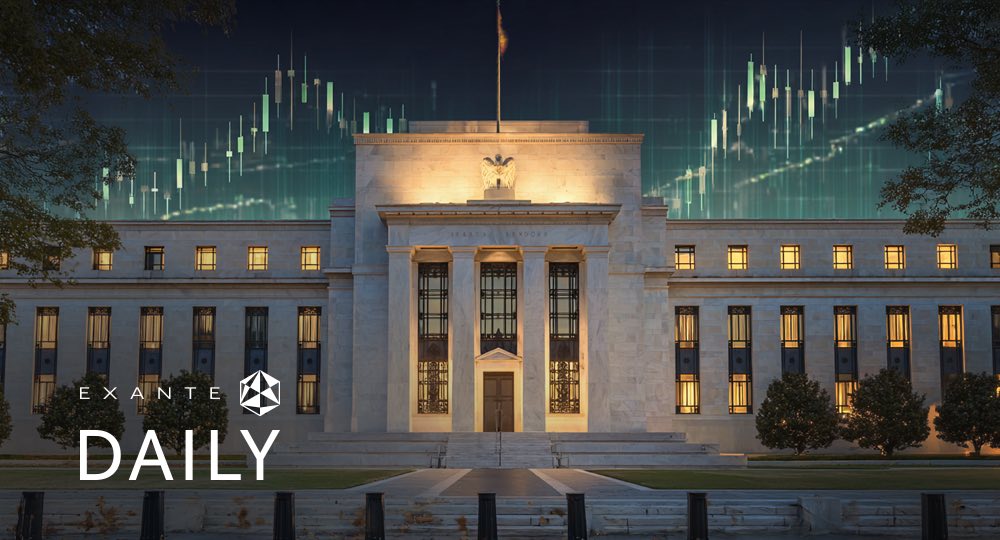
Fixed Income Briefing August 2024

- With weaker Q3 growth, US Treasuries benefitted from extra duration and convexity in early August as the VIX spiked to levels not seen since 2020 but then swiftly fell back to normal levels. Yields on the benchmark 10-year Treasury note in August dropped below 4% for the first time since 2024’s opening week. A mild US inflation report, with inflation data showing continued easing with headline inflation climbing just 0.2% from the prior month and 2.9% from a year ago, and a slight increase in US unemployment, raised concerns that the US Federal Reserve (Fed) may be “behind the curve” in pre-empting a more significant slowdown. Treasuries have largely rallied from mid August. The market's attention will be on the Personal Consumption Expenditures (PCE) data for July, the Fed’s preferred inflation gauge, due for release later this week. The PCE decreased to 2.5% year on year in June, down from May’s 2.6%, with a modest 0.1% month-on-month increase, indicating that inflationary pressures are easing in the US.
- The dollar index has dropped to its lowest since July last year on expectations of the first rate cut in September. For the month of August, the dollar has fallen 3.2%, on track for its biggest monthly decline since November 2022. The US labour market is showing signs of softening, with the US economy adding just 114,000 nonfarm payroll jobs in July, the unemployment rate rose to 4.3%, and average hourly earnings growth slowed to 3.6%, the slowest since May 2021. The labour force participation rate rose to 62.7%, back where it was in April. Labour costs increased an annualised +0.9% in Q2, following a downwardly revised 3.8% rise in the first three months of the year. Nonfarm business sector productivity increased at a 2.3% annualised rate in Q2 after rising at an upwardly revised 0.4% pace in the January-March period. The Conference Board's consumer confidence index rose to a five month high in August to reach 103.3 from an upwardly revised reading of 101.9 in July. The Expectations Index, based on consumers' short-term outlook for income, business, and labour market conditions, came in at 82.5. That was the highest level since August 2023 and was up from 81.1 in July. The share of consumers who viewed jobs as "plentiful" slipped to 32.8% from 33.4% in July. Some 16.4% of consumers said jobs were "hard to get," up from 16.3% in July. The report indicated that overall sentiment improved, although consumers expressed concerns about stock market volatility and rising unemployment in August. The proportion of consumers predicting a recession remained unchanged.
- In addition, the University of Michigan's consumer sentiment index Increased to 67.8, up 2.1% from July and above the 66.9 economists had expected. This is the highest reading since June and the first increase in five months. The expectations index improved to 72.1, the highest in four months vs July’s 68.8, while the current economic conditions gauge edged down (60.9 vs 62.7). Both the year-ahead and the five-year inflation expectations were unchanged at 2.9% and 3%, respectively. The US savings ratio fell in Q2, to 3.4%, the lowest since Q4, 2022, signalling buoyant consumer confidence, despite softening in the labour market.
- The flash Composite PMI Output Index in August was at 54.1, slightly down from July’s 54.3 and a 4-month low. The Flash US Services Business Activity Index for August came in at 56.0, also up from June’s 55.3, a 28-month high. The service sector outperformed manufacturing for a fourth straight month. The Flash US Manufacturing PMI hit an 8-month low, falling to 48.0 from July’s 49.6. All five components of the PMI weakened in August and manufacturing employment growth meanwhile slowed to near-stagnation.
Yield curves
Based on comments from Fed Chair Jerome Powell at the Economic Symposium at Jackson Hole this month, that “The time has come for policy to adjust. The direction of travel is clear, and the timing and pace of rate cuts will depend on incoming data, the evolving outlook, and the balance of risks," markets are fully pricing in a rate cut for September. The only surprise factor really being the extent of this rate. There is a 67% chance of a 25-basis-point cut and about 33% chance of a bigger 50-bp reduction, according to the CME FedWatch tool. About 106 bps of cuts in 2024 are priced in by futures traders.
The yield on the 2-year Treasury note, which is highly sensitive to movement of the Fed Funds rate, has fallen from 4.36% in July to 3.902 in August. The benchmark 10-year US Treasury note yield has fallen to from July’s 4.035%, while the yield on the 30-year bond has also fallen to from 4.35% at the end of July.
Yield swings
US Treasury yields continued to decline in August, although there was some degree of volatility earlier in the month with the end of the Yen carry trade and equity markets experiencing a notable shift away from large-cap technology stocks and rotating to small-cap stocks on weaker US employment data. However, iInflation has continued to trend towards central bank targets, and a period of monetary policy easing is coming further into focus with the Fed expected to cut rates in September, the ECB having already started its cutting cycle in June and the Bank of England cutting rates on 1st August.
Source: Factset

Source: Factset 8:00 PM EDT 27 August 2024
Global Economic and Market Review
In the UK, inflationary pressures continued, with the headline rate rising to 2.2% from June’s 2.0% year-on-year. While core inflation measured 3.3%, services prices remained elevated at 5.7%. Concurrently, unemployment surprisingly fell in August to 4.2% from 4.4%, while the annual growth in total earnings (including bonuses) for the April to June period was 4.5%.
On the growth front the UK continued to do well. The S&P Global Flash UK PMI Composite Output Index rose to 53.4 in August from 52.8 in July, signalling a solid upturn in private sector activity. The flash Services PMI also rose. It came in at 53.3, up from July’s 52.5 and a 4-month high. Consumer sentiment is remaining steady, as evidenced by the GfK Consumer Confidence Survey, which remained at -13, the same as July 2024. This is the highest level since September 2021.
On 1st August, for the first time in four years, the Bank of England (BoE) cut its benchmark rate. It cut rates by 25 basis points from 5.25% to 5.00% after headline inflation fell to the BoE target of 2% in May and June. However, BoE Governor Andrew Bailey said at the Jackson Hole symposium this month that despite the second-round inflation effects appearing to be smaller than expected. it is "too early to declare victory" over inflation, noting that inflation has not yet returned to target levels on a sustained basis. He stressed that monetary policy would need to remain "restrictive for sufficiently long" to ensure that inflation is kept in check. Markets are expecting at least one more rate cut this year with November considered most likely.
In the eurozone the ECB still looks to be on course for a cut in September despite eurozone inflation rising slightly to 2.6% in July from 2.5% in June. Core inflation - excluding volatile items such as food, energy, alcohol, and tobacco - remained at 2.9% year on year for the third consecutive month, as services price pressures continued. The ECB’s chief economist, Philip Lane, said at the Jackson Hole symposium that the bank’s goal of getting inflation back to 2% is “not yet secure” and that interest rates will need to stay restrictive for the time being. Morningstar has forecast headline inflation to fall to 2.2% in August, mainly as a result of falling energy prices in August 2024 versus August 2023. The eurozone is growing as a whole, but German GDP dipped slightly in Q2 against expectations of a small rise. Other core countries saw rises and Spain is still surging, growing by 0.8% against expectations of 0.5%. On the growth front, the eurozone HCOB flash Composite PMIs for August rose to 51.2 in August of 2024 from 50.2 in the previous month.
The benchmark German 10-year yield was -11.5 bps as of 27 August at 2.29%, while the UK 10-year yield was -10.6 bps as of 27 August at 3.97%. The spread between US 10-year Treasuries and German Bunds contracted by -21.4 bps over the month. It currently stands at 157.6 bps. The gap between Italy and Germany's 10-year yields, a gauge of investor sentiment towards the eurozone's more indebted countries, is, according to Worldgovernmentbond.com, now at 138.3 basis points, up from July’s 137.9 basis point differential.
Global bond markets are starting to rally at the prospect of more and potentially deeper rate cuts in the US if the labour market begins to deteriorate too quickly. Even though rate cuts will happen, they won’t be going back to the low levels seen prior this monetary cycle. In addition, markets can still be affected by rising geopolitical factors. The risks of widening tensions in the Middle East, the ongoing war in Ukraine, growing trade fragmentation with tariff wars between the US, Europe and China, and increased risk around the US election, will continue to affect yields and the US dollar. There are also the ongoing longer term concerns related to structural demographic shifts with questions around immigration, particularly in the US, affecting labour markets and wage pricing. In addition, as OPEC+ tries to maintain a level of “stability” in the market by shifting supply, this may make energy prices more volatile in the short to medium term.
With less than 70 days until the US elections, investors will have to consider the potential changes in US election outcomes with the consequent implications for the repricing of government debt and term premia. Investors may wish to consider adding tactical exposure through yield-spread targeting and, with cuts on the agenda for most major central banks, barring the BoJ, they may also need to think about adding exposure to longer-term bonds.
Key risks
- Inflation fails to fall in line with projections, weighing on asset prices. The divergence in central bank policy rates is changing with the Bank of Japan raising interest rates by 15 basis points while the Fed is looking at a September cut, the ECB will likely follow with a cut in September, and the UK likely to go for another cut in November barring any major event. Although inflation is falling in Europe, the UK and the US, it may not fall in line with projections due to sticky services costs, particularly in Europe. There are also risks that headline inflation may rise due to commodity prices rising, particularly for gas in Europe and in materials used in the chip industry.
- Policymakers over or undershoot. Central banks are cautious about getting the balance between supporting their economies while fighting future inflation risks but could still get it wrong with growth rates starting to fall faster in the US than currently expected or political arguing, particularly in Europe, affecting the pace of policy change. In addition, a variation in the timing of rate cuts could cause currency volatility.
- Geopolitical tensions and events. Tensions in the Middle East are still high and the continuing war in Ukraine is still a large risk for European economies. The tensions in the South China Seas between the Philippines and China remain as well as between the US and China in relation to Taiwan. IAlso in October there are the ASEAN summits which may make the differences in economic, political, and security issues between the members more obvious as well as the BRICS leaders summit which will once again put the US dollar under the spotlight.
While every effort has been made to verify the accuracy of this information, EXT Ltd. (hereafter known as “EXANTE”) cannot accept any responsibility or liability for reliance by any person on this publication or any of the information, opinions, or conclusions contained in this publication. The findings and views expressed in this publication do not necessarily reflect the views of EXANTE. Any action taken upon the information contained in this publication is strictly at your own risk. EXANTE will not be liable for any loss or damage in connection with this publication.
Este artículo se presenta a modo informativo únicamente y no debe ser considerado una oferta ni solicitud de oferta para comprar ni vender inversión alguna ni los servicios relaciones a los que se pueda haber hecho referencia aquí. Operar con instrumentos financieros implica un riesgo significativo de pérdida y puede no ser adecuado para todos los inversores. Los resultados pasados no garantizan rendimientos futuros.
Regístrese para recibir perspectivas de los mercados
Regístrese
para recibir perspectivas
de los mercados
Suscríbase ahora



